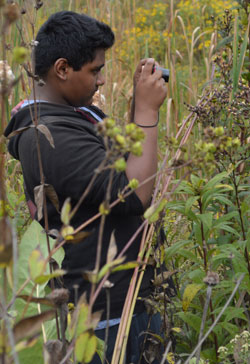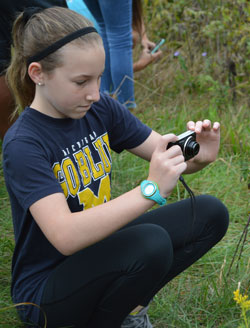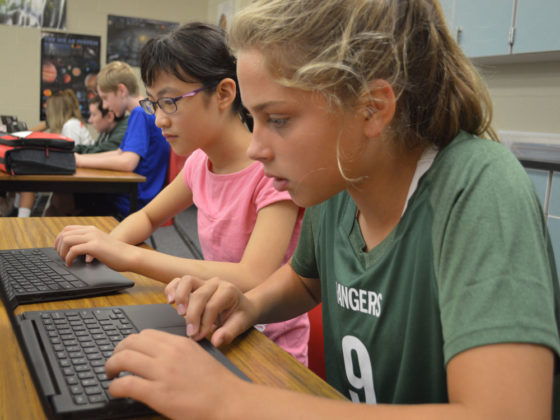As science activities go, Central Middle School teacher Mark Deppe’s seventh-graders had to love the one that started with him advising them to “Walk slow, move things around, look carefully, be patient” and take photos of the plants, trees and crawling, flying, slithering creatures they saw.
Those were the guidelines before Deppe and fellow science teacher Jessica Priem took their 60-or-so students to a meadow and a wooded area outside school for an ecology scavenger hunt.

The hunt was part of a field study unit that introduces terms such as biosphere, habitat, native versus non-native and invasive, and niche – or an organism’s role in the environment – as those terms relate to earth science.
Outside, it took little time for students who went to the meadow to start snapping photographs of goldenrod – “I just knew what it was,” said Rebecca Lane about the bright yellow flower – ants, grasshoppers, a centipede, a worm embedded in dirt beneath a rock, and several evasive crickets.
Deppe said students are enthusiastic about the ecology scavenger hunt and subsequent project because they “like exploring and working independently, are very self-motivated, pretty adept at doing research and showing creativity.”

Ecosystems Everywhere
Once they were back indoors, students worked in teams to identify what they had found, classify each item down to family, genus and species and create a slideshow to detail their work.
Gigi Sinicrope seemed to be her table’s designated expert, having attended Goodwillie Environmental School in fifth and sixth grade. She easily identified a photo she and her partner, Lucy Wu, took of a leaf-footed bug. “We’ve had these on our sunporch,” Gigi said.
Lucy moved on to a photo she took of a clover, but was overwhelmed trying to identify it.
“Find out what time (season) it blooms,” Gigi suggested.

Eventually, they will create food webs to show “what eats what,” he said, and as species are introduced or become endangered, how that affects an ecosystem.
The goal, Deppe said, is that students gain an appreciation for the natural world, and to understand ecosystems having seen them with their own eyes, right outside school.
“We live in a global world, where things move very easily from place to place and country to country, even the materials used to make the clothes on your back right now,” Deppe told his students. “Not always, but that can be a problem when it allows plants and organisms to move around too.”












